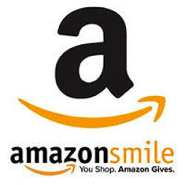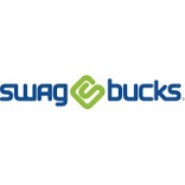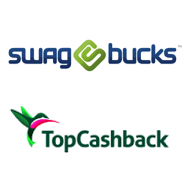Lots of people use online shopping portals as a way of getting cashback or points when purchasing things online. Some of the bigger portals are Ebates, ShopAtHome, and TopCashBack. In order to get a better understanding of how shopping portals work, we reached out to Rich from shopping portal DollarDig.
Note: This article is about shopping portals in general, not about any particular portal. The purpose is to better understand how portals work.
Disclosure: DoctorOfCredit and staff have no affiliation, financial or otherwise, with DollarDig.
Affiliate Networks
DoC: How do shopping portals work in general – does each shopping portal speak to each retailer and get the affiliate commissions directly, or do all the portals go through one network?
Rich: Not all shopping portals are the same, however, most ordinary cashback sites go through affiliate networks and apply for different merchant programs that offer them commission. The cashback site in turn shares a portion of their commission with the user.
Each shopping portal has to apply to each merchant’s program individually.
Generally speaking, portals go through affiliate networks. Each affiliate network can have anywhere from hundreds to thousands of merchants. For example, Network ABC may have Sears, Kmart, etc. while Network XYZ has Nordstrom, Macy’s, etc. A merchant may belong to multiple affiliate networks as well.
Banking/credit card sites (such as ShopDiscover/DiscoverDeals) are entirely different, and I can’t tell you what their process is (I don’t know), but I would venture to say that they themselves strike a deal with each individual retailer (as opposed to using the networks that other sites use).
There are some merchants that have their own in-house programs, such as Amazon, eBay, and iTunes. All affiliates are running through that program.
DoC: So would we say, for example, that the original affiliate network gets 2.1% from Walmart for purchases, they pass on 2% to the portal, and then the portal passes on 1.5% to the consumer. Is that the gist of it?
Rich: Yes, that’s about accurate for most affiliate networks. Different networks do whatever works for them. For example, one affiliate network takes 20% of the commission paid out. So if the portal gets 10% of a $100 purchase ($10), the affiliate network it went through would get $2 as well.
Also, some merchants offer performance incentives for higher volume. This is entirely up to the merchant themselves.
DoC: Since there are so many affiliate networks offering the same merchants, which one does the shopping portal use? Just whichever is giving a higher rate on that given day?
Rich: Usually the rates are equal between the networks, so there isn’t a lot of moving back and forth between networks.
DoC: Could you give us some examples of affiliate networks?
Rich: You can easily find these networks by using a search engine. Here is a link that shows the top 20 of 2014.
DoC: Does each one cater to a certain type of retailer, like one who has lots of clothing websites and one who has electronics, and one who deals with smaller websites, etc?
Rich: Affiliate networks have their own guidelines as to who they will accept in their program. Some networks only allow established businesses in their network. Others will allow start-ups.
Most of the bigger networks deal with ordinary, physical goods. There are, however, some networks that deal exclusively with Click-Per-Action offers. For example, there’ll be offers to get paid $1 for joining a mailing list. Other networks deal only with digital goods such as ebooks.
There’s really no network for each type of good sold (for example, no network specific to just clothing, furniture, etc.).
DoC: We’ve heard of Cartera who works with many milage portals, such as United and Southwest. Would that be an example of an affiliate network?
Rich: Yes, Cartera would be an example of such an affiliate network. As far as I know, Cartera only partners with larger organizations such as credit card issuers, not ordinary shopping portals.
DoC: Is there a difference between the bigger shopping portals and the smaller ones in terms of their affiliate agreements?
Rich: For the most part, no. The only difference is that the bigger portals may have access to retailers that the smaller ones don’t. [Some merchants programs are only available to a portal once they have established themselves over time.]
Larger portals may also get a higher commission than smaller ones.
DoC: We see many sites/blogs who have affiliate links with Amazon and some with eBay. How does that work?
Rich: Some retailers are very strict as to who they allow in their program. Others are very open. Both eBay and Amazon have their own in-house affiliate programs. (iTunes does as well.) From a cashback portal perspective, both are hard to get into, but eBay is more difficult. Regular sites/blogs will probably have an easier time.
Note that Amazon does not permit all shopping portals to offer cash back. They’ll only allow them to be listed on the portal without offering any incentive (similar to the way a blog would have an Amazon link).
DoC: Are there other retailers who have an Amazon-style affiliate program?
Rich: There are some merchants that use specially designed applications that they run in-house to track sales and commissions. Not many of the larger retailers do this. Other than eBay, iTunes and Amazon, I’m not aware of any other large retailers that run their own programs.
DoC: Are all payments from merchant-to-portal always a percentage or is there sometimes a flat-rate for a sale paid out?
Rich: Payouts are not always percentage based. Some stores only pay a flat amount. For stores like Walmart, Sears, etc., it’s a percentage. Amazon is mixed – percentage and flat amount. eBay is a percentage. Most subscription-based items (site hosting, a site membership, etc.) offer a flat amount.
Some stores also pay a different percentage based on category of items purchased (for example, electronics may pay less than clothing).
Payout Amount
DoC: We often see fluctuations in payout amounts. Is this mostly the portal who is raising their payout, or is it the retailer who raised their rate, which is then passed on to the customer? I’d imagine it’s a mixture of the two, but is it common for retailers to raise the payout or is it mostly just the portal fluctuating?
Rich: As you surmised, it’s definitely a mixture of the two. However, I do have to say that retailers rarely change their rates drastically (and if they do, it’s usually lower, unless they are promoting a new product or it’s a related holiday).
DoC: Maybe you could address particularly Staples, Sears, Kohl’s, Best Buy, eBay and Amazon, which are particularly interesting to many. Do they fluctuate their payouts often, or is it more the portals who are fluctuating?
Rich: By far, it’s the portals themselves for those particular retailers, with the exception being Amazon (they just recently began offering cashback to portals, and I assume are experimenting with different categories of merchandise).
The exception to this may be the portal striking a deal with the retailer.
DoC: And how does that work? Would the portal then deal directly with the merchant?
Rich: No, transactions would still go through the affiliate network they both belong to, though the deal would be negotiated outside of the networks (email, phone, etc).
DoC: Does the merchant ever obligate the portal to pass on a higher rate to the consumer, i.e. ‘we’ll raise the rate, but you need to send it to the customer’?
Rich: No, I haven’t come across a case where the portal is required to increase/decrease their cashback to the customer, though the merchant can certainly make that stipulation.
Tracking
DoC: What’s the best way to make sure the purchase tracks properly with the portal?
Rich: I’ve used cashback sites for years and what I do (although some may consider it overkill) is add my items to my cart, then open a browser I normally don’t use. In that ‘new’ browser, I click on my favorite cashback site’s link and search for each item by switching back and forth between browsers (basically duplicating my cart in the ‘new’ browser). I then check out in that rarely-used browser.
Alternatively, clearing out your cookies then going to your favorite cashback site and completing your purchase usually works as well.
You should also make sure you aren’t using any browser add-ons (which may high-jack your cashback), or services like ShopRunner (which have agreements with the merchants).
[Note that using ShopRunner with cashback has not definitively proven that a consumer will lose out of cashback, but it is a possibility. Editor’s note, see this post where we discussed this issue.]
If your last click to a retailer was from a cashback site, your cookies will tell that to the retailer, so they know to pay out the commission to that particular cashback site. So, in theory, there should never be an issue.
But, as well all know, things are never flawless. It may be entirely possible that your click didn’t register properly. Perhaps you accidentally clicked a different link to that retailer after your cashback click. Some merchants require that you must be on their site ‘xx’ number of minutes before completing your transaction (and after clicking the cashback link) for the commission to be paid out.
This will very rarely vary between different portals. If you’re having an issue with tracking using one portal, it would likely be the same issue had you used a different portal. To be on the safe side, clear your cookies or use the method that I use of switching to a little-used browser.
DoC: I’ve seen some people mention that you should empty the item out of your cart and re-add it, after clicking through the portal. I know from personal experience that I’ve had success despite not following that, so it’s obviously not a hard rule. Why is this necessary?
Rich: It isn’t always necessary, but if cash back is important to you, I’d do it. Different merchants have different rules, so if you have your items in your cart and go to your favorite cash back site, click the link and check out, they won’t get their commission and you won’t get your cashback.
Post Speed
DoC: It’s interesting that some portals are very fast to report the pending cashback and some are faster. For example, with TopCashBack I usually get the cashback pending in my account within a day or two, but with ShopDiscover I usually get the email from Discover a week later. Is this just an inefficiency on the part of the slower portal, or are there different systems that they’re using which is delaying the cashback from showing up as pending?
Rich: Cashback sites vary, mostly depending on which system they use. Some have programmed a ‘link’ to the networks, so it checks every hour to update cashback. Other sites may manually update their cashback statistics.
Most often, the issue with the slow tracking is that the cashback site may not be checking in hourly/daily. Occasionally, the slow tracking can be due to the retailer not be submitting their sales to the affiliate network often. Also, there may be a technical issue with the reporting of sales.
Banking/credit card sites are entirely different and I don’t know what their process is, but I would venture to say that they themselves strike a deal with each individual retailer and they wait for the transaction to complete and ship before crediting your account. From my own personal experience, I generally see my mileage/cashback bonus/credit at the end of my billing cycle. If I returned the item (or something else happened), I would then see that as a debit on my next statement.
If I ever own a bank that issues credit cards I’ll be more than happy to get back to you with more details! 🙂
Claw-backs
DoC: We occasionally see portal ‘claw-backs’, where the cashback gets zeroed out after it got posted. Usually, this happens when a promo code was used on the purchase, or because it was a gift card purchase. And sometimes that cashback won’t post to begin with, due to a promo code and the like. Please give us more information on when this will or won’t happen.
Rich: In most cases where a sale is valid and nothing out of the ordinary occurs, a ‘claw back’ will not happen – more on that later.
Cashback on gift card purchases – where you actually purchase the gift card – is almost never commissioned. [Some exceptions apply, particularly for retailers that only sell gift cards.] Cashback usually is valid on redemption of a gift card.
[Editor’s Note: See FrequentMiler’s laboratory for updated information on which merchants will pay out on gift card purchases and which won’t. It also occasionally depends on the portal; some will pay out and some won’t.]
There are some coupon codes that may negate your cashback, but this would be instant and not be ‘clawed back’. (More on coupons below.)
Cashback being clawed back generally shouldn’t happen. The circumstances where I have seen this occur were when the transaction was fraudulent in the first place, the item was returned, or if the customer contacted the retailer and made an adjustment to the order (cancelled an item or changed their billing info). Contacting the retailer to make an adjustment after you place your order generally leads to the customer losing out on their cash back.
Also, note that cashback on reservation type purchases (airlines, hotels, car rentals, etc) isn’t paid out until after the reservation is completed.
Keep in mind that mistakes do happen, even on the network/merchant’s end. Follow up with your cashback site to find out what happened! However, if you see something like this happening too often, you may want to reconsider which cashback site you are using.
I recently had an incident where the customer swore they did everything right, but I then showed them a screenshot of the cashback being declined by the merchant themselves. It’s unfortunate, but it does happen.
DoC: You mentioned coupons invalidating cashback. Does that happen often? And why is it that certain coupons negate cashback and some don’t?
Rich: In my experience, very few coupons will negate cashback, but it’s difficult – from a customer’s perspective – to tell whether or not the coupon will negate the cashback. From my past experiences, it’s the promo codes that provide a larger discount (Friends & Family coupons, for example) that will more likely negate the cashback.
The basic way this works is that if the merchant posts the coupon code in the affiliate network, you will get the cashback. Sometimes a retailer won’t post coupons on the affiliate network but advertise them through different avenues. One example would be a coupon which is exclusive to a select few people which ends up being ‘leaked’. It’s usually those coupons that aren’t posted on the affiliate network that will negate cashback.
As a consumer, there’s no good way to know if you’ll get cashback on the purchase, the only ones who will know are the merchant and the affiliate network.
Note that many portals specifically post coupons which are approved by the merchant and verified not to invalidate the cashback. Be sure, however, that it’s the portal themselves posting the code and not an outside contributor. Some portals allow people to post codes and deals on the site which weren’t reviewed or approved by the portal. (All coupons posted on Dollar Dig are approved by the merchants for cashback.)
DoC: Is there ever human review on a portal purchase?
Rich: Generally not. However, if unusual activity is occurring (fraud, a huge spike in transactions, etc), a human being will most likely get involved and look into the situation.
DoC: Big Thanks to Rich from DollarDig for sharing with us a view from the other side of the shopping portal. If you have any questions on portals, please comment below. Rich has told us he will do his best to answer any questions you may have!
Here are some related posts regarding online shopping portals:







Excellent post – Thank you!
Thanks!
Excellent post. Exactly that one you won’t find anywhere else.
It shows that you can provide relevant yet non-destructive information.
Thanks!